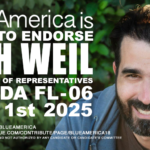
UPDATE: The burning man's name was John Constantino, and he lived ten minutes from my house, in the town where I used to work. I wonder if our paths ever crossed.
Yesterday, a man set himself on fire on the National Mall. He poured gasoline on himself and lit himself up. Passersby tried to put out the fire. Witnesses report that another man had a tripod set up and recorded the event. Was he the designated witness?
"There was not a lot people could do because it was a gasoline fire," Scheflen said.
She said he may have said something before he acted "but it was nothing intelligible." She said she did not see him holding any signs before he set himself ablaze.
"I'm not aware of any signage or any articulation of any causes," said Lt. Pamela Smith of the U.S. Park Police, which is investigating along with the D.C. police department.
He set himself on fire. What was the message? What are we supposed to learn? Is it a cry of protest, or the last desperate cry of a mentally ill mind? Imagine his fierce determination. How do you get past the self-protective instinct?
Thich Quang Duc was a Buddhist monk who burned himself to death on a Saigon corner on June 11th, 1963. He was protesting the persecution of Buddhists by the Vietnamese government led by U.S.-backed Ngo Dinh Diem. Malcolm Browne won a Pulitzer for the picture, and it spread around the world. Time:
Journalist David Halberstam, who witnessed the monk's self-immolation and won a Pulitzer Prize for his war stories, remembered the moment in one of his books, The Making of a Quagmire: "Flames were coming from a human being; his body was slowly withering and shriveling up, his head blackening and charring. In the air was the smell of burning flesh. ... Behind me I could hear the sobbing of the Vietnamese who were now gathering. I was too shocked to cry, too confused to take notes or ask questions, too bewildered to even think."
Afterward, four more monks and a nun set themselves ablaze protesting Diem before his regime finally fell in 1963. Rather suddenly, setting oneself on fire became a political act. As the American presence increased in Vietnam in the mid- to late 1960s, more and more monks committed self-immolation, including thirteen in one week. It even took place in the U.S., right outside the Pentagon, when Norman Morrison, an American Quaker burned himself to death while clinging onto his child as a mark of his rejection of the Vietnam War. (His child survived, and Morrison was revered in Vietnam for his purported martyrdom.)

I was nine years old. It was on the front page. I didn't understand, and I asked my mother: Why did he do that? She tried to explain, but there was nothing to compare it to. It was so shocking. Even President Kennedy talked about it. (I read years later that when JFK saw the picture, that was when he knew we'd lost the war.)
It was years before I developed a visceral understanding that people could only set themselves on fire when they need to make someone listen, and all other avenues of protest are blocked off -- that, or they're mentally ill. Maybe both. And to our corporate media, this burning man will be a mere blip, just another sensational story among others. The burning man died this morning, case closed.
But the hateful and angry rhetoric of extremists swirls up into a massive, toxic cloud that blows across the land, and I'm left to wonder what it leaves behind.
What is the message of the burning man?


















